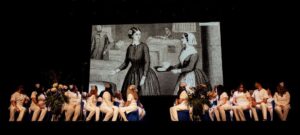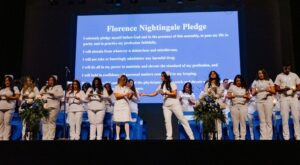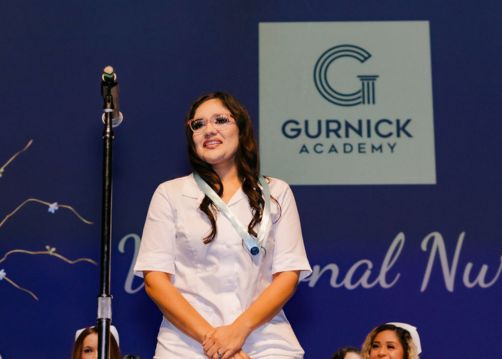Nursing Education in the Information Age, and the MSN
Date: September 27, 2022
Nursing Education
What is meant by nursing education in the information age? As healthcare practices and knowledge have evolved, so have nurses. Likely, no one has advanced more than this modern professional. Today’s nurses have management positions leading entire departments. They are administrators, educators, community healthcare spokespersons, and leaders serving in the public healthcare sector.
Early Nursing Education
But, this was not always the case. For centuries, the nursing profession remained largely unstandardized and operated in less than theoretical methods. Despite formalizing attempts to heighten the industry (even the 1896 formation of the American Nurses Association), nursing remained largely unorganized until the 20th Century.1 Early efforts at organization and professionalism were met with obstacles. In short, progress was achieved slowly and over a long period.
The first nurses sprang from church deaconesses, whom the early church assigned to help the infirmed and poor. Other initial nursing efforts were by family members caring for one another informally with home remedies. Still, other early nursing practices were in wartimes. During wartime, nursing resembled aides bandaging, cleaning, and caring for soldiers. Nursing tasks remained simple, mirrored help roles, and most often resembled practical tasks rather than medical or scientific practice.
Nevertheless, formal attempts did little to advance the industry. Meanwhile, nursing education remained without accreditation, licensing, or unifying organizations until the latter part of the 20th Century.1 Further, nursing persisted as a learn-on-the-job vocation for much of the time. By the 1900s, strong recommendations were made (and repeatedly ignored) to replace work-to-learn models with sound evidence-based academic foundations.2 In brief, literal arguments intensified for moving the profession from the hospital to the university. In other words, from workplace training to academic training.
A Bewildering Array of ‘Collegiate’ Programs
“By the end of the 1930s, a bewildering array of ‘collegiate’ programs existed. It was an ambiguous attempt partly because baccalaureate programs were mostly invented by trial and error. These were within the combinations of opportunities and constraints presented in each local hospital and university pair (Petry, 1937).”3
Nevertheless, “It wasn’t until the 1950s when advances in science and technology began to transform healthcare on a grand scale. Consequently, the nursing profession” began to change.2 A few years later, in 1954, “Baccalaureate programs were in the experimental stage.”3
1964 Federal Nurse Training Act
Of note, “In 1964, the federal Nurse Training Act ‘pumped enormous funding into collegiate nursing education. Consequently, the Act spurred the development of baccalaureate, advanced practice, and Ph.D. programs.”2 Concurring with President Lyndon B. Johnson’s term, he hailed the Act as “the most significant nursing legislation in the history of our country.”4 Johnson also believed the Act would attract the “most qualified young people to this great and noble calling.”4
Surprisingly, the 1960s left formal nursing competencies still largely unstandardized. In 1978, the National Council of State Boards of Nursing (NCSBN) was established. With the formation of the NCSBN began the National Council Licensure Examination (NCLEX) administration.5 Whereby, the NCLEX forced nursing graduates to sit for and pass examinations to obtain licensure. Simultaneously, it created (and therefore regulated) minimum competency levels for practice within the profession.
Finally, by the “1980s, nursing students began moving into universities.”2 “In 1983, the Institute of Medicine issued a report calling for a national center for nursing research. Two years later, in 1985, the National Institute of Nursing Research, part of the National Institutes of Health (NIH), opened.”2 Today, the organization aims to lead nursing research in ongoing evidence-based practice.
Education Becomes Standardized and Academic
As education expanded, nurses with higher education, including master’s degrees, played more significant roles. “By the latter half of the 20th Century, graduate education in nursing was established with master’s and doctoral programs growing across the U.S.”3
“Nurses may use master’s degrees to become nurse educators, consultants, and administrators—all of which pay much more than the average RN position,” cites Scrubs magazine in a recent article.6 Consequently, today, one may be a Nurse Practitioner, certified registered nurse anesthetist (CRNA), geriatric nurse, clinical nurse specialist, or more.
Master’s-level Education in Nursing Programs
Bachelor’s of Science in Nursing (BSN) to Master’s of Science in Nursing (MSN) pathways emphasize nursing scholarship. Simultaneously, MSN instruction focuses on healthcare policies, advanced research, health informatics, and nursing leadership and management. Financial resource management and varying curriculum development are also stressed. As a whole, MSN pathways cover instructional and learning processes for would-be nurse educators.
Generally, graduate-level MSN programs strive “to instill in nurses the vital knowledge and skills to promote health, lead change,” says Samantha Manlosa Sanchez, Gurnick Academy of Medical Arts’ Dean of Nursing. “This is to elevate advanced care in various roles and diverse environments.”
Benefits to MSN Education
According to experts, nursing is expected to expand to meet community demands. So much so that the U.S. Bureau of Labor Statistics projected employment growth for nurses with master’s degrees to be upward of 40 percent between 2021–2031.7
On the whole, the nursing vocation receives high rankings within multiple core employment areas. U.S. News ranked the Nurse Practitioner #1 in Best Healthcare Jobs and the vocation #2 in 100 Best Jobs. Additionally, the profession received an overall job satisfaction scorecard of 8.4 out of 10.8 Rankings are determined using an elusive mix of factors, including median salaries, growth percentages, occupational stress levels, and work-life balances.8 Additionally, the vocation has a mere 1.2 percent unemployment rate.8
Summary
With all that the information age and nursing bring together, isn’t it time you looked into our Master’s in Nursing program?~








